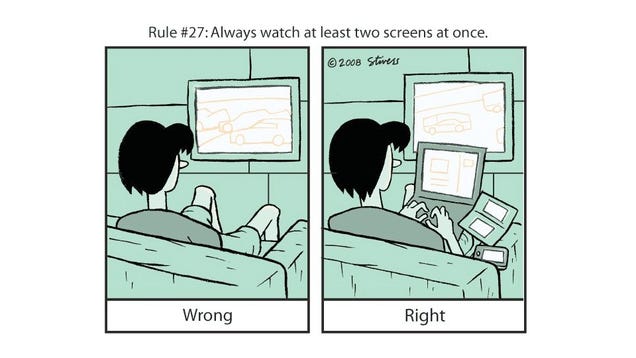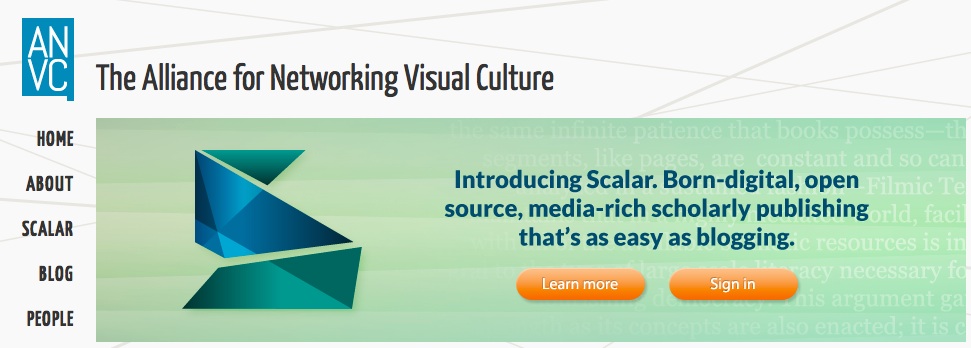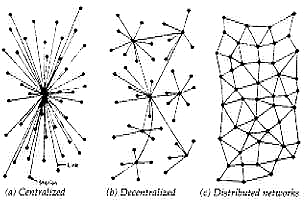Scalar
As college students in the 21st century, we are constantly surrounded by screens and images. Whether it is regarding our social lives, personal pursuits, or academic endeavors, we can’t seem to escape the ubiquity of digital content. This fact is especially pertinent in academia, where most student now begin and finish their work on the computer, instead of beginning and finishing on paper. This is especially true in fields like film and media studies and the humanities, where much of the content that a student would be handling are now created and indexed online in various digital format.

Engaging with these new digital forms has created a communicative environment as well as a new subject of study. The usage of digital media in Higher education has been largely focused on improving the dissemination of information within and outside of the institution. One successful implementation of this concept is the project “Scalar” at USC. Funded by the Alliance for Networking Visual Culture, the project seeks to create a pipeline to support emerging forms of scholarly publication through digital creation. This new technological platform allows students to interact and manipulate digital content in new and unique ways, but more importantly it is building rich collaborations between various archives, groups, and scholars who can then work together within this new platform and increase access and dissemination of these otherwise very exclusive academic publications.

Scalar is a free, open source authoring and publishing platform which was designed to introduce a streamline way of writing long-term, digital-born scholarship online. It enables users to utilize media from multiple sources and compliment that with their own writing in an interactive way, the user interface is simple and does not require much technical expertise. It includes a built-in reading interface as well as an API, which allows Scalar content to be used to drive custom application. Scalar also has tools to structure essay and long-length works in ways that takes advantage of the unique capabilities of digital writing, such as nested, embed, and non-linear texts. Most importantly, the project challenges the traditional notion of authorship and format of peer-review by supporting collaborative authoring and reader commentary. This is precisely the intention of the creators, to not only create a streamlined platform for producing digital-born content that will improve the dissemination of information but also to push back against the conventional understanding of authorship in academia with its collaborative authorship function.

Digital publication opens up countless new possibilities to the structures of your academic work, it is literally a space where anything can do anything to anything. There are two tools within Scalar that allows you to do this, one of them is path, which are linear sequences of content that lines up like chapters in a book, or steps in an instructional manual. The other is tags, which are non-linear groupings of content like items in the index of a book. Scalar has the flexibility to apply both grouping and sequencing, path can contain other paths and tags can refer to other tags, thus allowing the author to construct both hierarchical and rhizomatic structures of content. Any piece of information within Scalar can be a reference to another piece of information, such as text, video, audio, and imagery. And because Scalar is open-source, you can create your custom visualizations and built new interfaces based on your own materials using the built-in API. What makes Scalar so sustainable is the support it gets in importing media from popular media sites such as YouTube and Vimeo. Other archive partners such as Internet Archives, Hemispheric Institute Digital Video Library, and the USC Shoah Foundation Institute for Visual History Archive allows users to import media from directly within Scalar. Their partnership with Critical Commons gives user the right to directly import video, audio, and
images from without fear of infringing on copyright citations.
But above all, the most creative design of Scalar is its Reader Feedback function which allows threaded comments on every pages created. Each comment then becomes a page in its own right within the publication, saving the user responses and enabling that content to be used in the visualization and indexing of the final publication. This feature helps to generate a recording of the dialogue and keeps in its memory all traces of commentary and interaction, something that can be very valuable in the editing and revising process of an academic publication. The ability to have multiple authors in Scalar supplements the reader feedback function in that it allows another person or an entire class the ability of collaborative authorship. Scalar then saves each author’s edits to every page in its history, and the group can go back and see who edited which exact section of the work.
ANVC’s project Scalar is an important source of inspiration in the field of digital publication and online authorship, it raises interesting and proactive questions about its possible implication to academic publications within higher education. Scalar is a free pioneering platform that offers scholars everywhere the tools to author media-rich and digitally-born online publications. These publications utilizes streaming videos, audio, interactive visualizations, tags, etc., and are already being used for dissertations and being published by university presses. Scalar, can help today’s digital minded students explore just how exactly online tools can help shape the present and pave the path for the future of publishing in academia.
Scalar is good example of an existing technology for the creation of interactive digital publication that is accessible to most students in higher education today. It serves as the grounds on which content for E-poster sessions can be built and revised. With that said, Scalar is a great transition into examining a few examples of E-poster sessions that exist in academia today, such as the Clifford Symposium held yearly at Middlebury College. The next step in the research process would be to generate a few pertinent examples of institutions who have or are using E-poster sessions and examine and identify the benefits they would bring as well as the barriers to their implementation.
| Previous page on path | "Existing Alternatives", page 1 of 2 | Next page on path |

Discussion of "Scalar"
Add your voice to this discussion.
Checking your signed in status ...